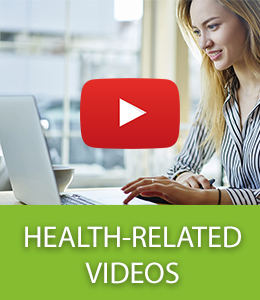
The female body undergoes significant internal and external changes during pregnancy, often with unpleasant consequences such as the appearance of varicose veins.
Why are dilated veins so common during pregnancy?
Dilatation of varicose veins affects nearly 50% of women in general, and the chances of developing the problem increase with each pregnancy.
The risk of developing varicose veins is generally higher during pregnancy for 3 reasons.
During pregnancy, a woman’s body circulates significantly more blood, by almost 50%, to ensure that the foetus can develop properly.
The growth of the uterus and the foetus puts extra pressure on the varicose veins.
The hormones released during pregnancy make the walls of the veins softer.
Varicose veins developing during pregnancy
Varicose veins that develop during pregnancy are different from normal varicose veins in that the dilated veins are firmer and more dilated. I can also form on the genitals during pregnancy.
Varicose veins of the back and pelvic varicose veins are specific to pregnancy. In the case of varicose veins in the back, the enlarged veins appear in the labia majora or in the thymus. Pelvic varicose veins present as congestion, typically with abdominal pain, a pulling sensation in the stomach, a strong urge to urinate and visible varicose veins in the external genital area, the stomach or the groin.
Varicose veins during pregnancy
During pregnancy, many women can experience varicose vein problems, including varicose veins. During pregnancy, increased blood flow and the pressure of a growing uterus act on the pelvic vein system, causing the vein walls to dilate and varicose veins to form. The occurrence of varicose veins in the genital area, or the vulva, is not uncommon, but is not usually a serious health problem.
However, varicose veins can cause discomfort and pain, especially towards the end of pregnancy.
Some ways to prevent and relieve varicose veins include:
Regular exercise and walking can help improve blood circulation.
Wear comfortable, loose-fitting clothes that do not constrict your pelvis or thighs.
Wear compression stockings or tights to aid circulation.
Avoid standing or sitting for long periods and take breaks to rest your legs.
Try to lie down regularly with your legs elevated to reduce blood pressure in the pelvic vein system.
Consult a doctor if your pudendal varicose vein is painful or inflamed.
However, treatment of varicose veins very often requires medical supervision and examination. It is always advisable to consult your doctor!
Symptoms of varicose veins
Common symptoms of varicose veins include aching pain, swelling, itching, muscle spasms, discomfort, burning or throbbing sensations, restless legs or heavy legs.
Symptoms of vaginal varicose veins
Symptoms of vulvar or vaginal varicose veins include tender, sore or itchy labia, pain during intercourse, discomfort when walking and a feeling of fullness in the vulva.
These specific varicose veins do not usually develop during the first pregnancy but after multiple pregnancies and in most cases they almost completely disappear after childbirth. The varicose veins that develop during pregnancy
Treatment of varicose veins after pregnancy
After childbirth, as hormone levels drop, varicose veins may revert to their original state and the veins may partially or completely regress. However, this is of course only true for varicose veins that appear during pregnancy.
Treating varicose veins can often involve a complex treatment approach. This means that lifestyle changes, including diet and exercise, may be necessary. Exercise helps to stimulate blood circulation, which is good for both the cardiovascular system. It is very important to be careful not to sit or stand too much at one time. If you have an office job that involves a lot of sitting, it is important to stand up a little at a time.
Eating fibre and drinking enough water are also particularly important to avoid constipation, which would put extra pressure on the veins. Other factors that can have a big influence on varicose veins are weight, and the wearing of flat-soled shoes, compression stockings and underwear.
In the event that vaginal varicose veins cannot be treated by the above methods or are in an advanced stage, it is strongly recommended that you consult a doctor. Their condition may deteriorate in the event of a subsequent pregnancy, which may lead to unpleasant symptoms, varicose veins or even thrombosis.



